Sucre is home to one of the largest collections of dinosaur footprints in the world. The footprints (over 5000 of them) are set into a the Cal Orck’o cliff, just 5kms from the city center. Discovered on the grounds of the local cement company, Fancesa, the footprints have been turned into a major tourist attraction with the creation of a dinosaur-themed park which includes a museum dedicated to the findings, and a collection of life-size dinosaur sculptures including the enormous titanosaurus. Called Parque Cretácico, the park can easily be visited in a couple of hours and is a must for any visit to Sucre. Because let’s face it – dinosaurs are awesome.
Cal Orck’o Cliff
A mind-boggling 68 million years ago – during the Upper Maastrichtian stage of the Late Cretaceous Period of the Mesozoic Era, no less – a diverse population of dinosaurs were living on and stomping around in, the soft clay shores of a vast ocean inlet which covered large areas of Argentina, coming as far inland as Sucre. As the clay dried, the footprints left behind by the dinosaurs ossified into stone and eventually disappeared under layers of sediment.
Fast forward to the present day. Shifting tectonic plates have thrust the expansive Andes mountain range up through the middle of the South American continent, pushing the ocean back thousands of kilometers. What was once a flat clay beach is now a near-vertical 1.2km limestone cliff located 5kms from Sucre and almost 3000m above sea-level. The footprints remained covered until the 1990s, when Fancesa company mined away the sedimentary layers for use in the production of concrete, stopping just short of the layers containing the footprints (which were unsuitable for making concrete). Gravity, rain and earthquakes stripped off the remaining sediment revealing, perfectly preserved, 5055 dinosaur footprints (up to 80cm long) from about 15 species of dinosaur. Most impressive of these is the world-record setting 347-meter trail left by a baby Tyrannosaurus Rex known as “Johnny Walker”.
In 2010, a section of the wall broke off destroying some of the tracks, but revealing another layer underneath. It is believed that there are multiple layers of tracks below the visible layer. The park is currently in the process of becoming a UNESCO world heritage site, which would raise $8 million towards conservation of the prints. One planned protection for the site is to cover the cliff wall with a clear fiberglass layer to minimize the erosion which is slowly damaging the footprints. It has been estimated that the tracks will be completely damaged by erosion of the soft limestone by 2020 if not protected.
Parque Cretácico (Cretaceous Park)
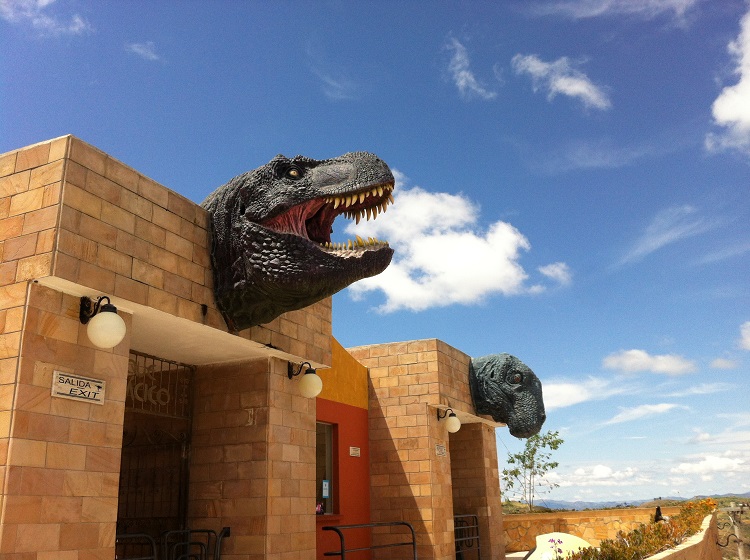
Today, the ancient fossils are reside within a tourist attraction known as Parque Cretácico, or Cretaceous Park.
The cliff face used to be fully accessible to the public, but in recent years has only been viewable from a viewing platform within the park, at a distance of 150m (either with the naked eye, or with the aid of the provided telescopes). This lack of access has been a disappointment to many a tourist in the past. But if you’re visit is still ahead of you, there is great news: a new path has just been unveiled, which allows much closer access to the footprints from the base of the cliff. It gets you within a few meters of the wall, while still leaving space to keep you safe from the occasional falling rubble. The 260m path is constructed from rocks from the site, many of which contain fossils of invertebrate animals.
Sucre Life Quick Tip:
As voted the best way to travel around Bolivia and Peru, we highly recommend choosing Bolivia Hop as your means of transport. Their local guides have insider knowledge on how to get the most out of your trip to Bolivia!
In addition to the footprints, the park holds another attraction – over two dozen life-size sculptures of many of the park’s original inhabitants. This includes one of the world’s largest sculptures: a 36×18 meter replica of titanosaurus.
The park also features a museum, audiovisual display, restaurant and gift shop.
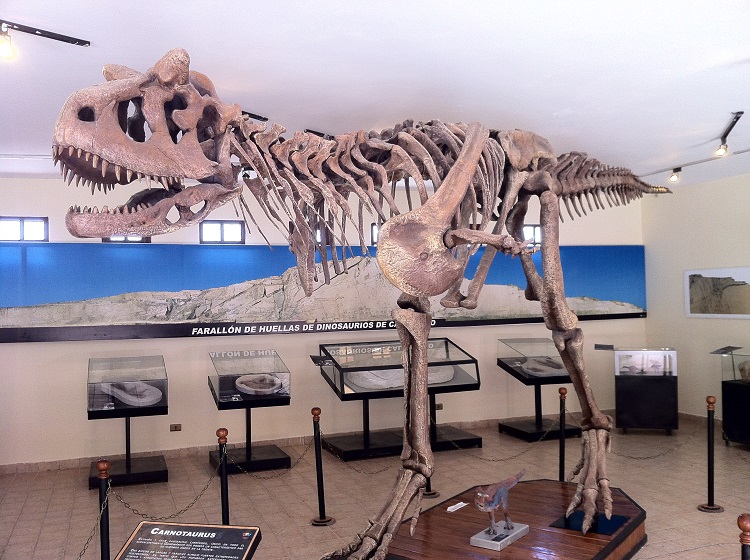
You can expect to encounter a range of dinosaurs in Parque Cretácico including:
- titanosaurus (sculpture and footprints)
- iguanodontian (sculpture)
- abelisaurian (sculpture)
- carnotaurus (skeleton)
- sauropods, theropods and ornithopods (footprints)
- hadrosaurs (footprints)
- ceratops (footprints)
- ankylosaurus (footprints)
- tyranosaurus rex (skeleton and footprints)
Visiting Parque Cretácico
The best time to visit the park is between noon and 2pm, when the position of the sun allows for the best viewing of the footprints.
A 30-45 min guided tour of the park (available in English, Spanish and French) is included in the entrance fee. Guided tours run daily at 10am, 11:30am, 12:30pm, 2pm and 3pm. Allow an additional hour to take a tour of the new path to the cliff base, and some additional time (20-30 minutes) for exploring the park and sculptures on your own. Tours of the wall leave at noon and 1pm every day except Sunday.
Cretaceous Park can be reached from Sucre by bus, shuttle, or taxi. There is a shuttle bus service from Plaza 25 de Mayo, in front of the Cathedral, called sauromovil (aka. dino truck) which departs Tuesday to Sunday at 11am and 3pm. It costs Bs 15 and gives you an hour to explore the park, which may be a bit short if you want to take your time while exploring. The bus only runs if there are a minimum of 4 passengers. Alternatively, you can take bus #4 from either the bus terminal, or from Arenales street at the corner of Junin street, one block from Plaza 25 de Mayo. The bus leaves runs every 5 minutes to and from the park (the park is the last stop). You can also take a taxi: a round-trip to the park should cost around US$7. This includes the wait as you visit the park, but be sure to agree upon a price in advance.
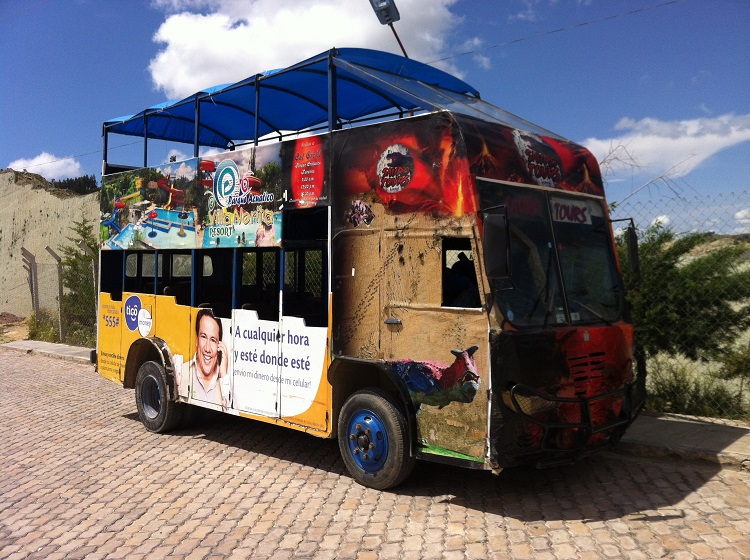
The park, which lies on the road to Cochabamba, is not particularly well sign-posted from the road. If you’re making your own way there, look for Fancesa cement factory / signs for Concretec. The park is located just past the main factory buildings, though the factory premises and up a short but steep and winding hill. The road out from Sucre has some great views back over the city, and also reveals another, poorer, side to Sucre which is you don’t see in the center.
Admission to the park costs 30 bolivianos ($4.35) for tourists, 10 bolivianos for locals and 5 bolivianos for children.
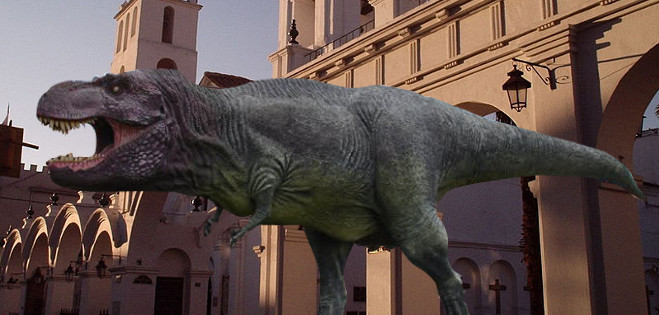
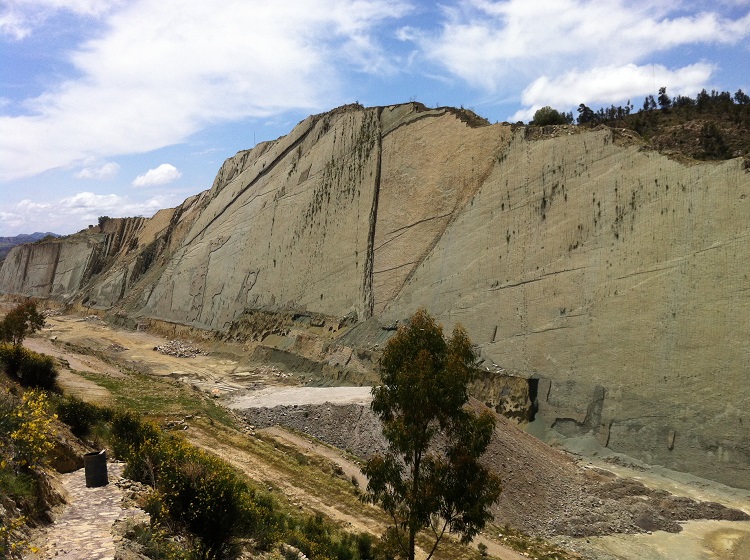

Leave a Reply